Gangcan Sun
Resource Management for IRS-Assisted Full-Duplex Integrated Sensing, Communication and Computing Systems
Aug 31, 2024Abstract:In this paper, we investigate an intelligent reflecting surface (IRS) assisted full-duplex (FD) integrated sensing, communication and computing system. Specifically, an FD base station (BS) provides service for uplink and downlink transmission, and a local cache is connected to the BS through a backhaul link to store data. Meanwhile, active sensing elements are deployed on the IRS to receive target echo signals. On this basis, in order to evaluate the overall performance of the system under consideration, we propose a system utility maximization problem while ensuring the sensing quality, expressed as the difference between the sum of communication throughput, total computation bits (offloading bits and local computation bits) and the total backhaul cost for content delivery. This makes the problem difficult to solve due to the highly non-convex coupling of the optimization variables. To effectively solve this problem, we first design the most effective caching strategy. Then, we develop an algorithm based on weighted minimum mean square error, alternative direction method of multipliers, majorization-minimization framework, semi-definite relaxation techniques, and several complex transformations to jointly solve the optimization variables. Finally, simulation results are provided to verify the utility performance of the proposed algorithm and demonstrate the advantages of the proposed scheme compared with the baseline scheme.
AI-enabled STAR-RIS aided MISO ISAC Secure Communications
Feb 27, 2024



Abstract:A simultaneous transmitting and reflecting reconfigurable intelligent surface (STAR-RIS) aided integrated sensing and communication (ISAC) dual-secure communication system is studied in this paper. The sensed target and legitimate users (LUs) are situated on the opposite sides of the STAR-RIS, and the energy splitting and time switching protocols are applied in the STAR-RIS, respectively. The long-term average security rate for LUs is maximized by the joint design of the base station (BS) transmit beamforming and receive filter, along with the STAR-RIS transmitting and reflecting coefficients, under guarantying the echo signal-to-noise ratio thresholds and rate constraints for the LUs. Since the channel information changes over time, conventional convex optimization techniques cannot provide the optimal performance for the system, and result in excessively high computational complexity in the exploration of the long-term gains for the system. Taking continuity control decisions into account, the deep deterministic policy gradient and soft actor-critic algorithms based on off-policy are applied to address the complex non-convex problem. Simulation results comprehensively evaluate the performance of the proposed two reinforcement learning algorithms and demonstrate that STAR-RIS is remarkably better than the two benchmarks in the ISAC system.
Wideband Beamforming for STAR-RIS-assisted THz Communications with Three-Side Beam Split
Oct 21, 2023Abstract:In this paper, we consider the simultaneously transmitting and reflecting reconfigurable intelligent surface (STAR-RIS)-assisted THz communications with three-side beam split. Except for the beam split at the base station (BS), we analyze the double-side beam split at the STAR-RIS for the first time. To relieve the double-side beam split effect, we propose a time delayer (TD)-based fully-connected structure at the STAR-RIS. As a further advance, a low-hardware complexity and low-power consumption sub-connected structure is developed, where multiple STAR-RIS elements share one TD. Meanwhile, considering the practical scenario, we investigate a multi-STAR-RIS and multi-user communication system, and a sum rate maximization problem is formulated by jointly optimizing the hybrid analog/digital beamforming, time delays at the BS as well as the double-layer phase-shift coefficients, time delays and amplitude coefficients at the STAR-RISs. Based on this, we first allocate users for each STAR-RIS, and then derive the analog beamforming, time delays at the BS, and the double-layer phase-shift coefficients, time delays at each STAR-RIS. Next, we develop an alternative optimization algorithm to calculate the digital beamforming at the BS and amplitude coefficients at the STAR-RISs. Finally, the numerical results verify the effectiveness of the proposed schemes.
Beamforming Design for the Distributed RISs-aided THz Communications with Double-Layer True Time Delays
Oct 21, 2023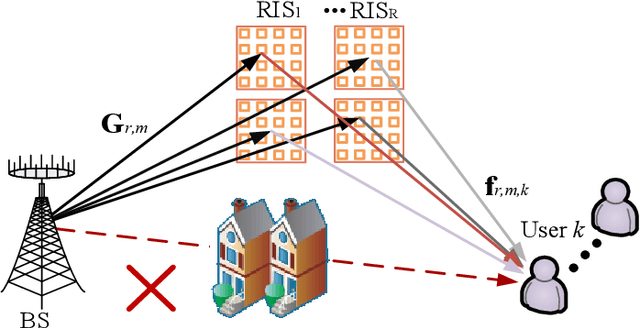
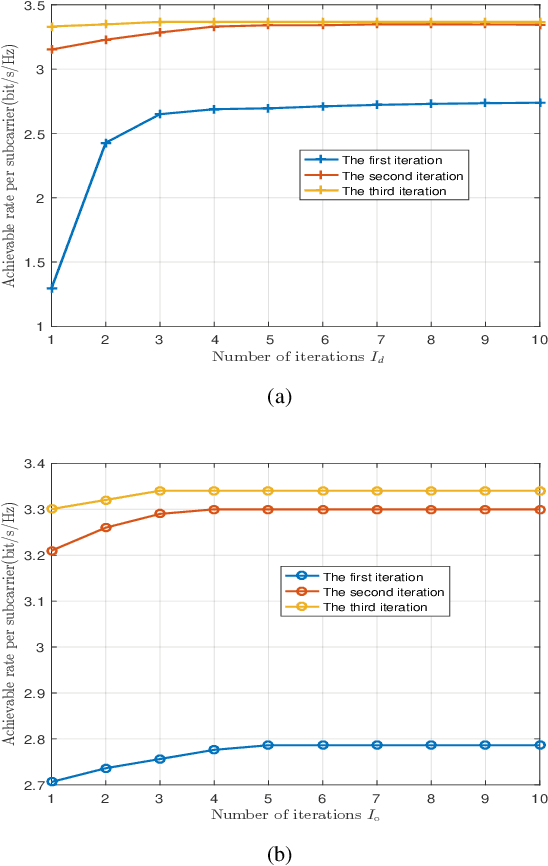
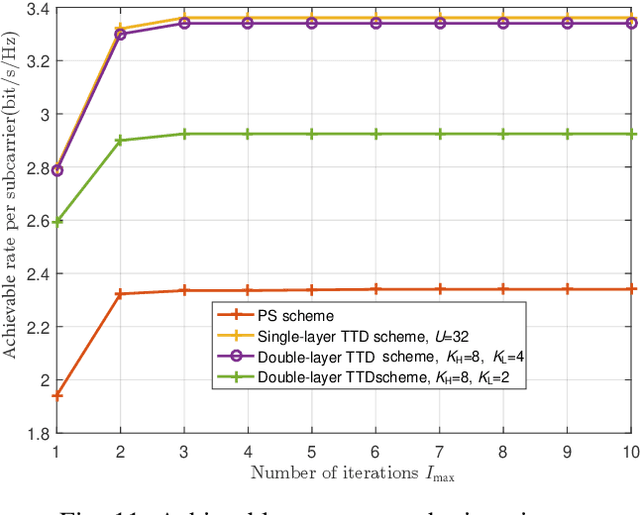
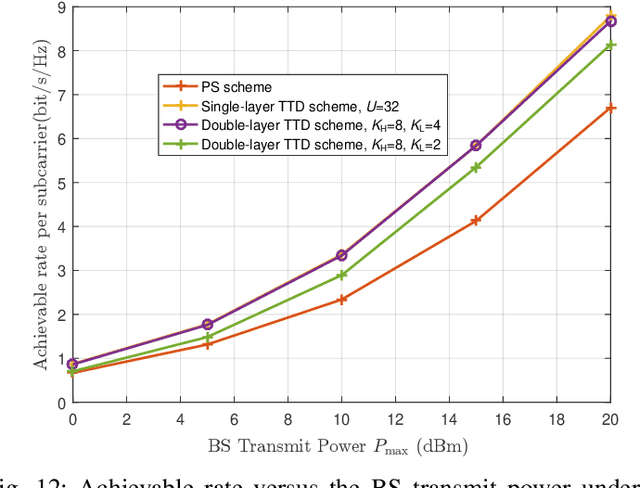
Abstract:In this paper, we investigate the reconfigurable intelligent surface (RIS)-aided terahertz (THz) communication system with the sparse radio frequency chains antenna structure at the base station (BS). To overcome the beam split of the BS, different from the conventional single-layer true-time-delay (TTD) scheme, we propose a double-layer TTD scheme that can effectively reduce the number of large-range delay devices, which involve additional insertion loss and amplification circuitry. Next, we analyze the system performance under the proposed double-layer TTD scheme. To relieve the beam split of the RIS, we consider multiple distributed RISs to replace an ultra-large size RIS. Based on this, we formulate an achievable rate maximization problem for the distributed RISs-aided THz communications via jointly optimizing the hybrid analog/digital beamforming, time delays of the double-layer TTD network and reflection coefficients of RISs. Considering the practical hardware limitation, the finite-resolution phase shift, time delay and reflection phase are constrained. To solve the formulated problem, we first design an analog beamforming scheme including optimizing phase shift and time delay based on the RISs' locations. Then, an alternatively optimization algorithm is proposed to obtain the digital beamforming and reflection coefficients based on the minimum mean square error and coordinate update techniques. Finally, simulation results show the effectiveness of the proposed scheme.
Joint Beamforming Optimization for Active STAR-RIS Assisted ISAC systems
Aug 11, 2023



Abstract:In this paper, we investigate an active simultaneously transmitting and reflecting reconfigurable intelligent surface (STAR-RIS) assisted integrated sensing and communications (ISAC) system, in which a dual-function base station (DFBS) equipped with multiple antennas provides communication services for multiple users with the assistance of an active STARRIS and performs target sensing simultaneously. Through optimizing both the DFBS and STAR-RIS beamforming jointly under different work modes, our purpose is to achieve the maximized communication sum rate, subject to the minimum radar signal-to-noise ratio (SNR) constraint, active STAR-RIS hardware constraints, and total power constraint of DFBS and active STAR-RIS. To solve the non-convex optimization problem formulated, an efficient alternating optimization algorithm is proposed. Specifically, the fractional programming scheme is first leveraged to turn the original problem into a structure with more tractable, and subsequently the transformed problem is decomposed into multiple sub-problems. Next, we develop a derivation method to obtain the closed expression of the radar receiving beamforming, and then the DFBS transmit beamforming is optimized under the radar SNR requirement and total power constraint. After that, the active STAR-RIS reflection and transmission beamforming are optimized by majorization minimiation, complex circle manifold and convex optimization techniques. Finally, the proposed schemes are conducted through numerical simulations to show their benefits and efficiency.
The Far-/Near-Field Beam Squint and Solutions for THz Intelligent Reflecting Surface Communications
Aug 26, 2022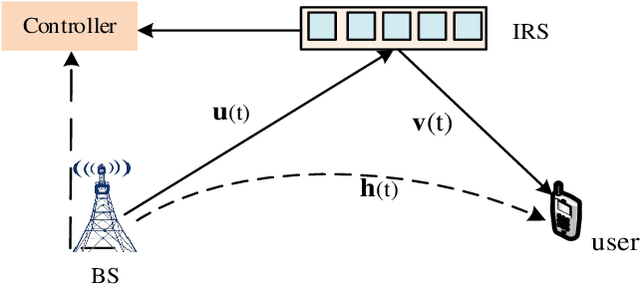
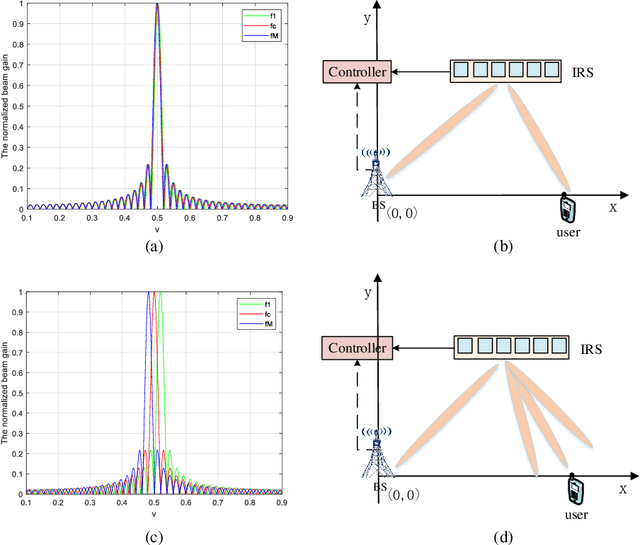
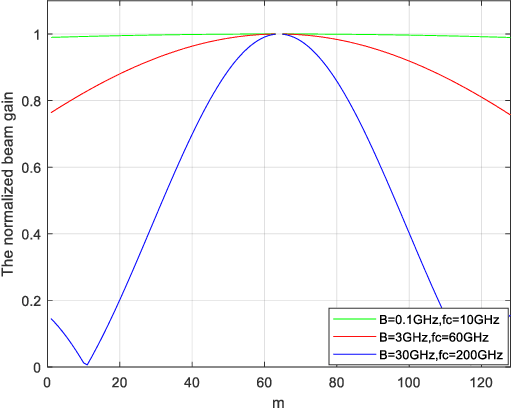
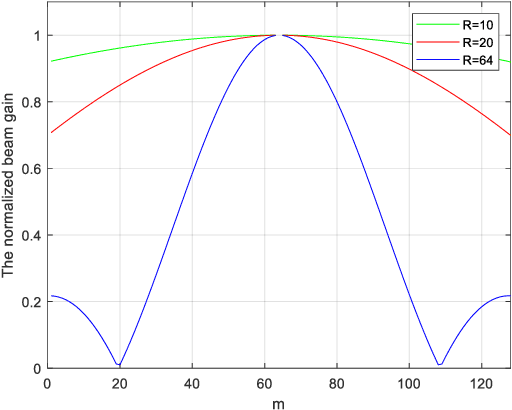
Abstract:Terahertz (THz) and intelligent reflecting surface (IRS) have been regarded as two promising technologies to improve the capacity and coverage for future 6G networks. Generally, IRS is usually equipped with large-scale elements when implemented at THz frequency. In this case, the near-field model and beam squint should be considered. Therefore, in this paper, we investigate the far-field and near-field beam squint problems in THz IRS communications for the first time. The far-field and near-field channel models are constructed based on the different electromagnetic radiation characteristics. Next, we first analyze the far-field beam squint and its effect for the beam gain based on the cascaded base station (BS)-IRS-user channel model, and then the near-field case is studied. To overcome the far-field and near-field beam squint effects, we propose to apply delay adjustable metasurface (DAM) to IRS, and develop a scheme of optimizing the reflecting phase shifts and time delays of IRS elements, which effectively eliminates the beam gain loss caused by beam squint. Finally, simulations are conducted to demonstrate the effectiveness of our proposed schemes in combating the near and far field beam squint.
Beamforming Analysis and Design for Wideband THz Reconfigurable Intelligent Surface Communications
Jul 30, 2022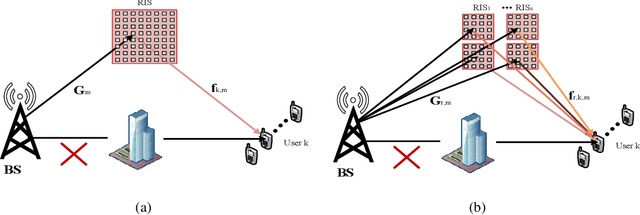
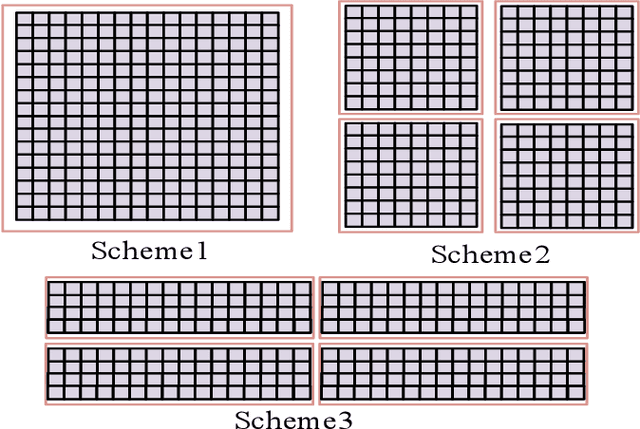
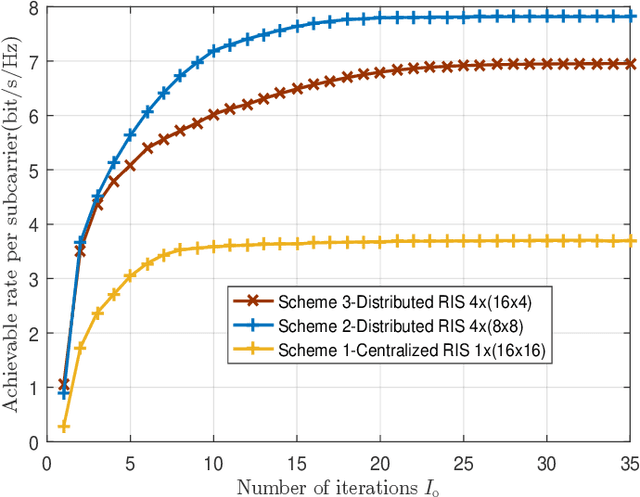
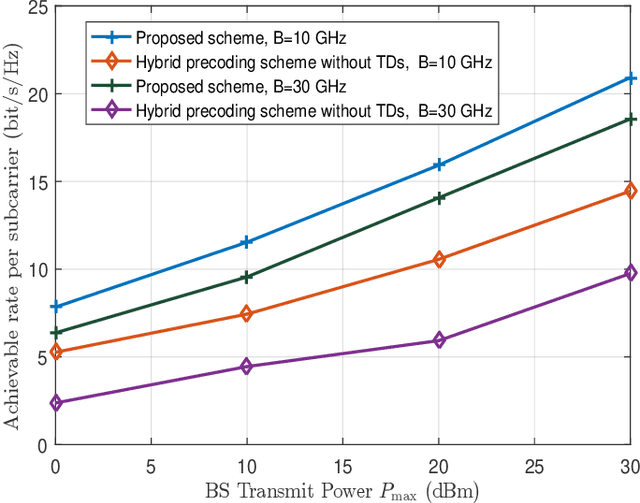
Abstract:Reconfigurable intelligent surface (RIS)-aided terahertz (THz) communications have been regarded as a promising candidate for future 6G networks because of its ultra-wide bandwidth and ultra-low power consumption. However, there exists the beam split problem, especially when the base station (BS) or RIS owns the large-scale antennas, which may lead to serious array gain loss. Therefore, in this paper, we investigate the beam split and beamforming design problems in the THz RIS communications. Specifically, we first analyze the beam split effect caused by different RIS sizes, shapes and deployments. On this basis, we apply the fully connected time delayer phase shifter hybrid beamforming architecture at the BS and deploy distributed RISs to cooperatively mitigate the beam split effect. We aim to maximize the achievable sum rate by jointly optimizing the hybrid analog/digital beamforming, time delays at the BS and reflection coefficients at the RISs. To solve the formulated problem, we first design the analog beamforming and time delays based on different RISs physical directions, and then it is transformed into an optimization problem by jointly optimizing the digital beamforming and reflection coefficients. Next, we propose an alternatively iterative optimization algorithm to deal with it. Specifically, for given the reflection coefficients, we propose an iterative algorithm based on the minimum mean square error technique to obtain the digital beamforming. After, we apply LDR and MCQT methods to transform the original problem to a QCQP, which can be solved by ADMM technique to obtain the reflection coefficients. Finally, the digital beamforming and reflection coefficients are obtained via repeating the above processes until convergence. Simulation results verify that the proposed scheme can effectively alleviate the beam split effect and improve the system capacity.
Securing Reconfigurable Intelligent Surface-Aided Cell-Free Networks
Feb 15, 2022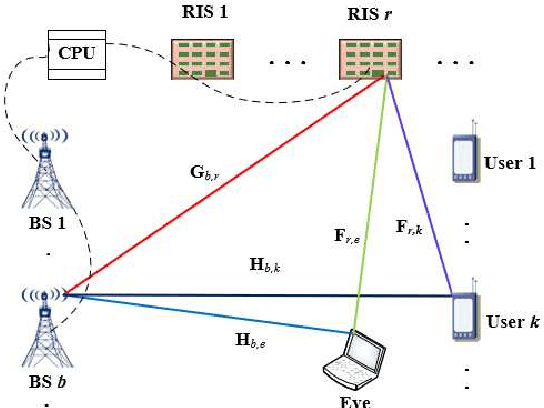
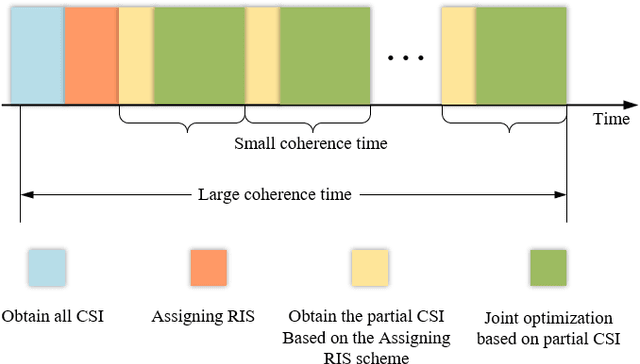
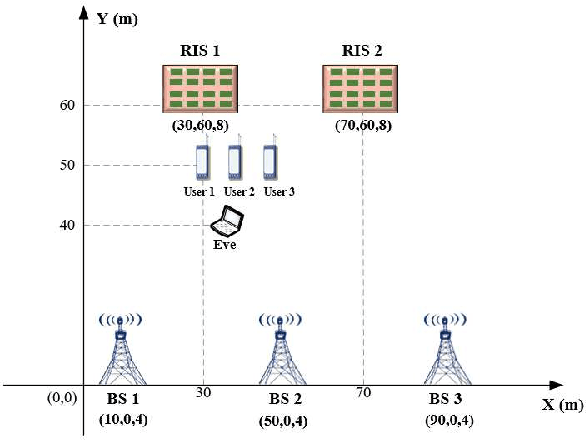
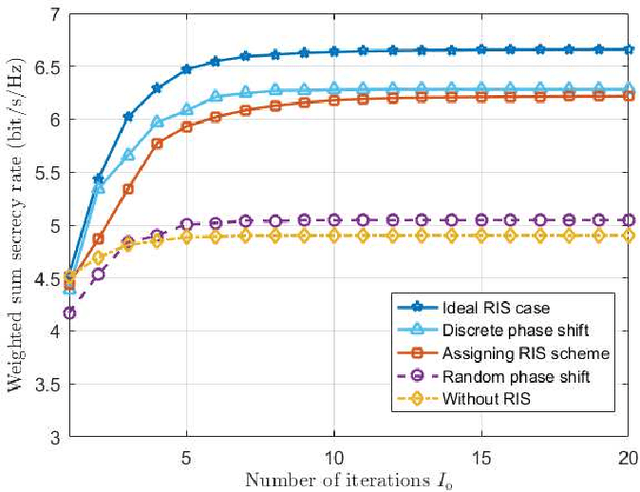
Abstract:In this paper, we investigate the physical layer security in the reconfigurable intelligent surface (RIS)-aided cell-free networks. A maximum weighted sum secrecy rate problem is formulated by jointly optimizing the active beamforming (BF) at the base stations and passive BF at the RISs. To handle this non-trivial problem, we adopt the alternating optimization to decouple the original problem into two sub-ones, which are solved using the semidefinite relaxation and continuous convex approximation theory. To decrease the complexity for obtaining overall channel state information (CSI), we extend the proposed framework to the case that only requires part of the RIS' CSI. This is achieved via deliberately discarding the RIS that has a small contribution to the user's secrecy rate. Based on this, we formulate a mixed integer non-linear programming problem, and the linear conic relaxation is used to obtained the solutions. Finally, the simulation results show that the proposed schemes can obtain a higher secrecy rate than the existing ones.
 Add to Chrome
Add to Chrome Add to Firefox
Add to Firefox Add to Edge
Add to Edge